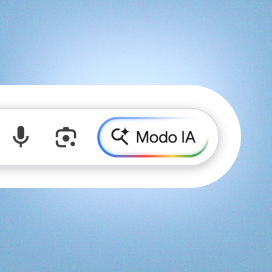Written by Fernando Maciá
Index
An accurate definition of the target audience is a fundamental component of any business that aspires to be successful. Every more or less experienced businessman should know that the more time and effort he devotes to the study of his target audience, the better conversion results we will obtain for our business, since the needs and requirements of our customers fluctuate according to time and other factors beyond our control.
Always being aware of customer needs and requirements is equally important to stay one step ahead of the competition and achieve better conversion results.
Certainly, when we already have a physical establishment it is much easier, since we know our audience quite well from the customers who visit us, and we always have the possibility of asking them, or even consulting our friends and family. On the other hand, if we start our business through an online store, things are a little more complicated, because it is very likely that we start from scratch. Let’s take a look at some of the recommended steps to follow to make our online store a success:
The basics to identify our market niche
First of all, we must identify the profile or profiles of our potential customers. That is, who our business is aimed at: where they are, what age groups they belong to or what language they speak. Based on this information, we are also interested in knowing more specific characteristics, such as their level of experience in the use of the Internet, their level of education, their interests, among others. Depending on the type of business, we will have to ask more or less questions to get a general definition of who might be interested in what we offer.
Keyword research
Performing a study of keywords by which our target audience would search for us is essential to empathize with our potential customers and adapt the content of our online store to match their needs. In addition, when you open yourself to know your target audience in depth, there is the possibility of finding even new products and services that you had not originally considered offering, and yet you can.
What are keywords?
Keywords are a word or combination of words with which the search engine algorithms classify our Web page and frame it as a relevant result for certain search categories. When there is a high correlation between the words we use in the contents of our Web site and the words that users and potential customers use in their searches, a good level of quality traffic is attracted to our portal or online store.
What aspects should we take into account when defining the list of keywords?
Once we have been able to make an outline of potential customers, the next step is to find out the words and terms that users might use to satisfy their need for a certain product or service. To draw up an initial list we must put ourselves in the shoes of potential customers and take into account countless aspects and the differences between the different groups within our target audience in order to define the keywords that will bring them to our store, for example:
Knowledge about the product or service. Not all of our potential customers will have the same knowledge about what we offer in our online store.
- Purchase motivation. The reasons why users want to purchase a certain product or service.
- The language they use. We must take into account jargons and language differences depending on their geographical location, age, among other factors.
- The degree of precision in the search. Some users will have a specific definition of what they want, some will search by brand, and others will use more generic terms and accept suggestions.
- Ambiguities in search terms. Beware of polysemy, which is the name given to words that are spelled the same but have different meanings. In the event that a user wants to “buy a cat”, there is a big difference between buying a cat, which is a pet, and buying a hydraulic jack, which is a tool.
- Seasonal trends. Some products, depending on the time of the year, will have more or less potential. For example, the keyword “Christmas baskets” will not have the same search potential in May as in the months of November or December.
Use of tools for the definition of the list of keywords for our online store
With an initial list we can move on to the next step, which is to check the search potential of the keywords we have initially selected, as well as to find possible new ideas that we had not considered.
This task can be performed through numerous tools available on the web, such as Google’s Keyword Planner. This useful tool allows us to enter a large number of keywords, providing an estimate of their monthly search volume, as well as the level of competitiveness that exists at the present time. In addition, it can suggest ideas based on the criteria entered, which may be new or expressed in a different way than we had done, thus helping to fine-tune the correlation between the needs of our target audience and the product or service of our online store..
Other tools that can be used as keyword suggestion tools are:
Competitor study
Spending a little time looking at the keywords our competitors rank for can also help us draw interesting conclusions. To do so, we can resort to tools such as SEMRush or Sistrix, where we only have to enter the domains of our competitors to obtain the results and analyze them.
Only after this more exhaustive study can we proceed to the selection and definition of the list of keywords with which we want to position ourselves in the search engines and that will serve as a representation of the contents of our online store.
Online surveys

There are several platforms that offer the service of conducting online surveys for free, with varying degrees of length and customization possibilities. Some of them are:
- The almighty Google. It has a special application to conduct surveys through Google Drive and does not require special knowledge to do so. In addition, once the survey is completed, you can group all the results in a spreadsheet for easier analysis. Customization options include different question and answer formats, images and videos.
SurveyMonkey
. It offers a free survey service with up to 10 questions and 100 answers. The main advantages of this platform is the possibility of embedding your surveys in other websites, blogs, or Facebook, as well as being able to check the results in real time.
Social networks
Social networks are a very powerful tool that we can take advantage of both in the promotion of our online store, as in the study of our target audience, once the business has been launched and begins to have an audience. The use of social networks can direct us towards specific aspects of our service where we can improve thanks to the participation and opinions of users.
Finally, it is important to point out that the needs of our target audience evolve and change, and we must evolve with them if we do not want to lose them.

 Knowledge about the product or service. Not all of our potential customers will have the same knowledge about what we offer in our online store.
Knowledge about the product or service. Not all of our potential customers will have the same knowledge about what we offer in our online store.


